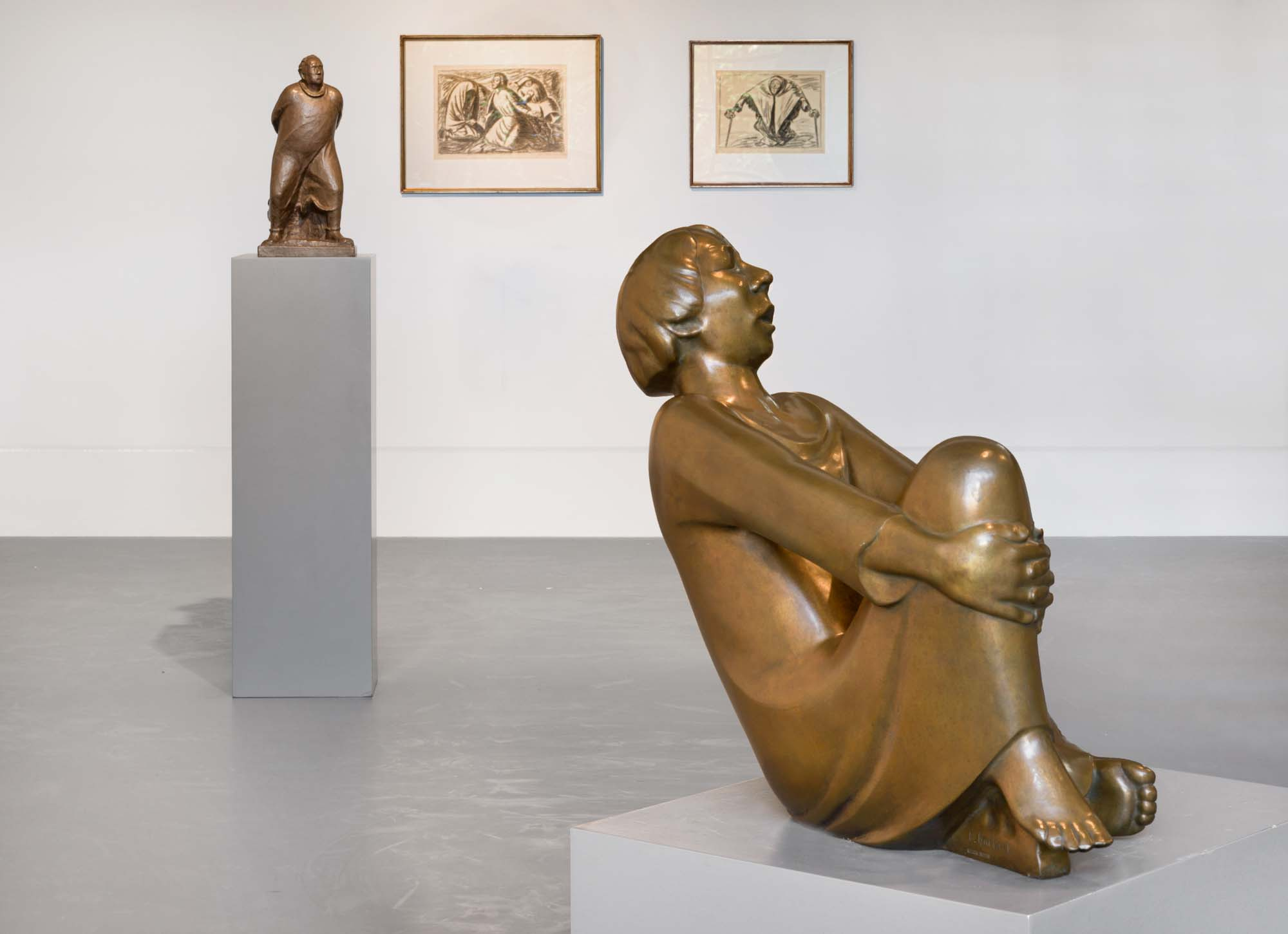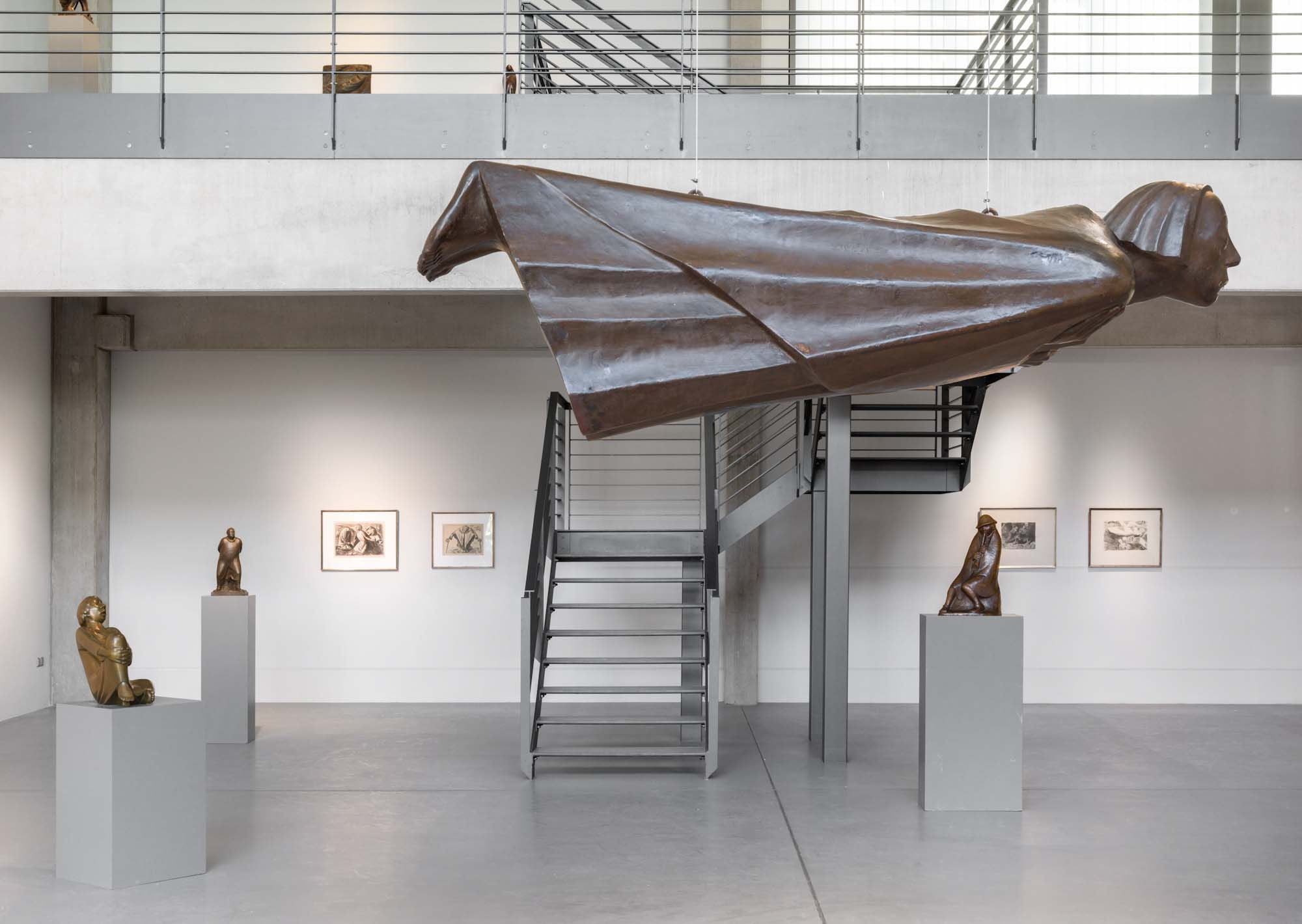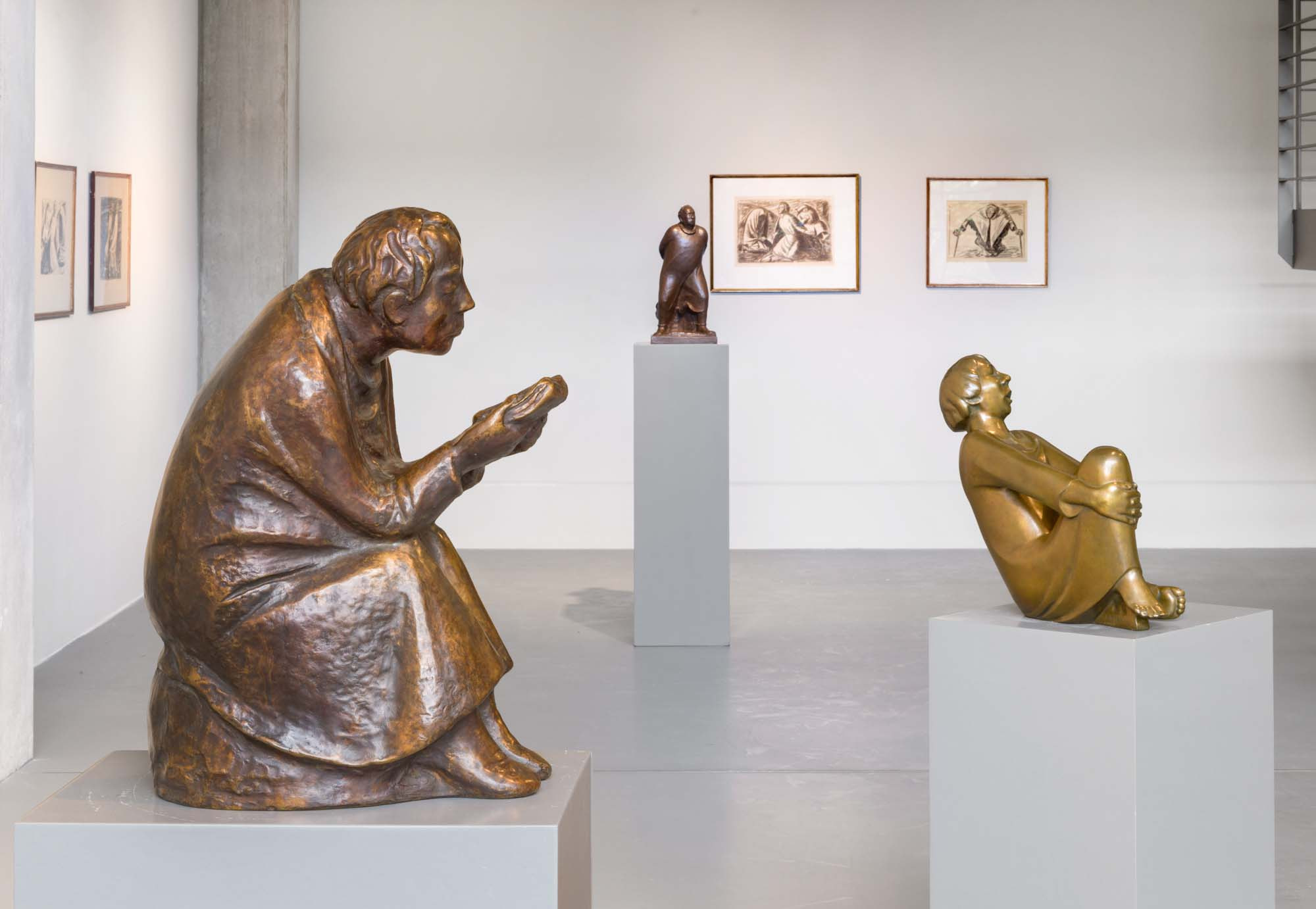


They are figures from life, from direct observation - and yet they are fundamentally about the condition of man's existence, about his being thrown between heaven and earth. Ernst Barlach's sculptural oeuvre is one of the highlights of modern art and the history of the foundry that cast Barlach's extensive, complex and still moving oeuvre in its entirety. The exhibition in the Hermann Noack Workshop Gallery is dedicated to the rare casts made during his lifetime, including such famous works as "The Singing Man" and "The Reunion".
In the summer of 1906, 36-year-old Ernst Barlach set off with his brother Nikolaus to what was then southern Russia, to Kiev, Kharkov and the Donets region. At this time, he saw German sculpture at a low point - he despised the fashions of the time, especially salon sculpture and neo-baroque. But he was by no means satisfied with his own work either. He strove for a style all of his own, which was to be an authentic expression of the human condition in his time. However, with his overloaded, Art Nouveau-influenced designs, he was still a long way from achieving this goal.
It is seldom possible to pinpoint an artist's turnaround towards artistic maturity as precisely as Barlach's trip to Russia. But of course it was not the sole experience of awakening, rather he found the inspiration that corresponded to his conception of aesthetics and expression in sculpture through the vivid observation there. The monumental expanse of the landscape and the people whose lives were characterized by poverty and deprivation - farmers, beggars and shepherds - showed him the way to artistic truthfulness: "Gosh, there are bronzes sitting there," was how he later described his first impression.
In his autobiography of 1928 he wrote: "Russia gave me its figures", but he saw himself "not without a share in the suchness of the finite failure, for when I returned and put on the first two beggars, who were symbols for me of the human situation in their nakedness between heaven and earth, in Friedenau in the old parlor, [...] there was no need to fight badly [...]".
Although bronze was to become the decisive material for Barlach's work, it took him several years to find his way there. He worked in wood, wrote plays and spent a long time in Italy before he was able to harness sculpture for his art. In a letter to his art dealer Alfred Flechtheim, he wrote: "... things of a certain daring, if not lightness, even in the material, in which the momentary delight is so decisive that their success would be impossible if they were executed slowly and laboriously in wood, keep coming to me. These things above all demand bronze, in which the entire freshness of the momentary feeling is preserved; here alone it can be faithful and preserve the experience of the minutes ..." The tension between the "experience of minutes" with a material that is designed to last indefinitely became fundamental to Barlach's work. It was combined with an unmistakable feeling for the balance between expressiveness, restraint and the moment of existential tension in the human body. The decisive phase for Barlach from the mid-1920s to the mid-1930s produced iconic works that Barlach was lucky enough to see realized in the Noack foundry during his lifetime. In their emotional and narrative power, they still speak to us today. Translated with DeepL.com (free version)
The exhibition will be on display from April 30 to July 3, 2022.
The gallery will be closed on Whit Monday, June 6.
Opening hours:
Mo - Fr 10 - 5 pm
Sa 12- 6 pm